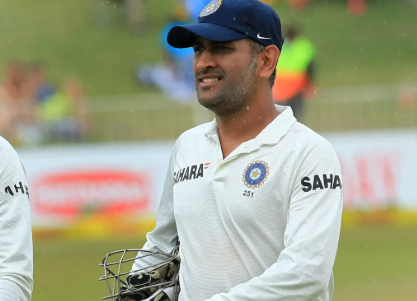The Evolution of Cricket: From Village Games to Global Sport
Cricket’s journey from its origins in 16th-century English villages to a prominent global sport illustrates significant cultural and social transformations. Initially characterized by informal play, the game gradually adopted structured rules, reflecting the changing dynamics of society. The influence of colonialism further expanded cricket’s reach, adapting local customs along the way. This evolution raises intriguing questions about the sport’s current identity and its future trajectory in an increasingly interconnected world.
The Origins of Cricket: A Historical Overview
Cricket, a sport steeped in tradition and history, traces its origins back to the 16th century in England. Early games were played in rural settings, often with makeshift equipment, reflecting a sense of freedom and community among players.
These informal matches featured rudimentary bat designs, which were primarily shaped from wood and resembled a simple club rather than the modern bat. As the sport gained popularity, the evolution of the bat became significant, adapting to the changing dynamics of gameplay.
This transition from rudimentary implements to more specialized tools marked a pivotal moment in cricket’s history, illustrating how the sport has evolved while retaining its essence.
Thus, the origins of cricket encapsulate a blend of innovation and tradition that continues to resonate today.
Read more: Understanding Cricket Formats: Test, ODI, and T20 Explained
The Development of Rules and Regulations
As the sport gained traction in the 17th and 18th centuries, the need for standardized rules became increasingly apparent. Early cricket matches often suffered from inconsistencies in gameplay and player conduct, prompting enthusiasts to advocate for game standardization.
The establishment of the first known rules in 1744 marked a pivotal moment, laying the foundation for future rule modifications. Governance bodies emerged to oversee regulation enforcement, ensuring fair play and adherence to established guidelines.
These developments not only fostered a sense of order but also enhanced the sport’s appeal to a broader audience. The codification of rules transformed cricket into a respected sport, allowing for competitive integrity and a shared understanding among players, ultimately contributing to its global growth and popularity.
The Impact of Colonialism on Cricket’s Spread
Colonialism played a pivotal role in the proliferation of cricket, as the British Empire used the sport as a tool for cultural exchange and social cohesion among its colonies.
Through the establishment of cricket clubs and competitions, local populations were introduced to the game, which often served as a means of asserting British identity and values.
This complex interplay between colonial influence and indigenous adaptation not only facilitated the sport’s spread but also reshaped it within diverse cultural contexts.
British Empire Influence
The influence of the British Empire played a pivotal role in the global proliferation of cricket, transforming it from a regional pastime into an international sport.
British diplomacy facilitated the establishment of cricket clubs and competitions in colonies, creating a framework where empire sportsmanship thrived. This colonial legacy saw cricket not merely as a game, but as a means of asserting national identity among colonized nations.
As the sport spread, it transcended its British origins, embracing local cultures and adaptations. In many regions, cricket became a symbol of resistance and unity, fostering a sense of national pride.
Thus, the British Empire’s impact on cricket was not only about expansion but also about the complex interplay of culture, identity, and sport in a changing world.
Cultural Exchange Through Sports
While cricket’s journey from a British pastime to a global sport is often attributed to colonial expansion, the complexities of cultural exchange during this period significantly shaped its development.
The sport functioned as a medium of cultural diplomacy, facilitating interactions between colonizers and the colonized. In regions such as India and the Caribbean, local adaptations emerged, blending indigenous traditions with British rules.
This sports exchange not only spread cricket but also fostered a sense of identity and pride within these communities. As the game evolved, it became a symbol of resistance and unity, transcending its colonial roots.
Ultimately, cricket’s global proliferation reflects a dynamic interplay of cultures, highlighting the transformative power of sports in bridging divides and fostering understanding.
The Emergence of International Competitions
The emergence of international competitions marked a significant turning point in the history of cricket, beginning with the first official match between the United States and Canada in 1844.
The establishment of the Cricket World Cup in 1975 further propelled the sport into the global arena, fostering a sense of unity and rivalry among nations.
As a result, cricket’s popularity soared, transcending geographical boundaries and developing a passionate following worldwide.
First International Match
As cricket began to transcend regional boundaries in the mid-19th century, the stage was set for the inaugural international match, which marked a pivotal moment in the sport’s evolution.
Held in 1844 between Canada and the United States, this historic encounter symbolized the emerging global appeal of cricket.
The match significance lay not only in its competitive spirit but also in its role as a catalyst for international camaraderie and rivalry.
It laid the groundwork for future competitions, fostering a sense of unity among nations while igniting national pride.
As spectators gathered, the event underscored cricket’s potential to connect disparate cultures, illustrating how a simple game could evolve into a platform for international engagement and celebration.
World Cup Impact
Cricket’s transformation into a truly global sport was significantly propelled by the establishment of the Cricket World Cup, which first took place in 1975.
This landmark event fostered global unity among nations, serving as a platform for international collaboration and cultural celebration. The World Cup has since evolved into a prestigious tournament, contributing to a rich sporting legacy that resonates with fans worldwide.
Its economic impact is profound, stimulating local economies and enhancing tourism in host nations. Moreover, the tournament heightens fan engagement, igniting national pride and fostering communal spirit as diverse cultures converge.
Ultimately, the World Cup not only showcases cricketing talent but also embodies the essence of global camaraderie, enriching the sport’s narrative on the world stage.
Rising Popularity Worldwide
Since the inception of the Cricket World Cup, the sport has experienced an unprecedented surge in popularity, marked by the emergence of various international competitions.
Grassroots movements have catalyzed youth engagement, fostering a new generation of players who are increasingly drawn to cricket. The establishment of international leagues has not only elevated the game’s profile but also created robust fan culture, connecting enthusiasts through digital platforms.
Cricket academies are proliferating, further nurturing talent and expanding participation. Local tournaments have become vibrant community events, enhancing engagement and enthusiasm at the grassroots level.
Additionally, the growth of merchandise reflects cricket’s commercialization, as fans enthusiastically support their teams. Collectively, these factors demonstrate cricket’s evolution into a truly global sport, resonating with diverse audiences worldwide.
The Rise of Limited Overs and Twenty20 Formats
The emergence of limited overs and Twenty20 formats has revolutionized the landscape of cricket, ushering in an era characterized by rapid gameplay and heightened spectator engagement.
As audiences sought shorter, more dynamic experiences, the limited overs format, introduced in the 1970s, laid the groundwork for what would become the explosive Twenty20 innovations.
These formats have not only condensed the game into thrilling, fast-paced encounters but have also attracted a diverse demographic of fans.
The strategic elements of limited overs cricket demand adaptability and creativity, transforming traditional approaches to batting and bowling.
Consequently, this evolution has redefined how cricket is played, viewed, and celebrated, ensuring its relevance in a fast-paced world and solidifying its status as a global sporting phenomenon.
The Role of Media in Popularizing Cricket
As limited overs and Twenty20 formats gained traction, the media played a pivotal role in amplifying their reach and popularity.
The evolution of media coverage, driven by broadcasting advancements, transformed how cricket was consumed globally. High-definition broadcasts and live streaming enabled fans to experience matches in real-time, fostering a deeper connection with players and teams.
Social media platforms emerged as vital channels for engagement, allowing fans to participate in discussions and share highlights instantly. This democratization of cricket content not only attracted new audiences but also catered to a younger demographic seeking fast-paced entertainment.
Consequently, the media’s influence has been instrumental in making cricket a global phenomenon, transcending geographical boundaries and cultural barriers, and solidifying its status as a beloved sport worldwide.
Cricket’s Global Influence and Cultural Significance
How did cricket evolve into a sport that transcends borders and cultures? Cricket has emerged as a powerful tool of cultural identity, uniting diverse communities across the globe.
Through cricket diplomacy, nations have leveraged the sport to foster peace and dialogue, showcasing its ability to bridge political divides. The game’s rich traditions resonate deeply within various societies, often reflecting local customs and values.
As cricket expanded beyond its British roots, it absorbed unique elements from countries like India, Australia, and South Africa, enriching its narrative. This adaptability has not only amplified its popularity but has also solidified its role as a cultural emblem, illustrating how sport can cultivate understanding and shared experiences among individuals from different backgrounds.
Conclusion
Cricket, once a simple pastime in English fields, has blossomed into a vibrant tapestry woven with threads of history, culture, and innovation. Its journey from rural games to a global phenomenon mirrors the ebb and flow of empires and societies. As the game continues to evolve, embracing new formats and audiences, it stands as a testament to the enduring spirit of competition and camaraderie, uniting diverse cultures under the shared banner of sport and celebration.





